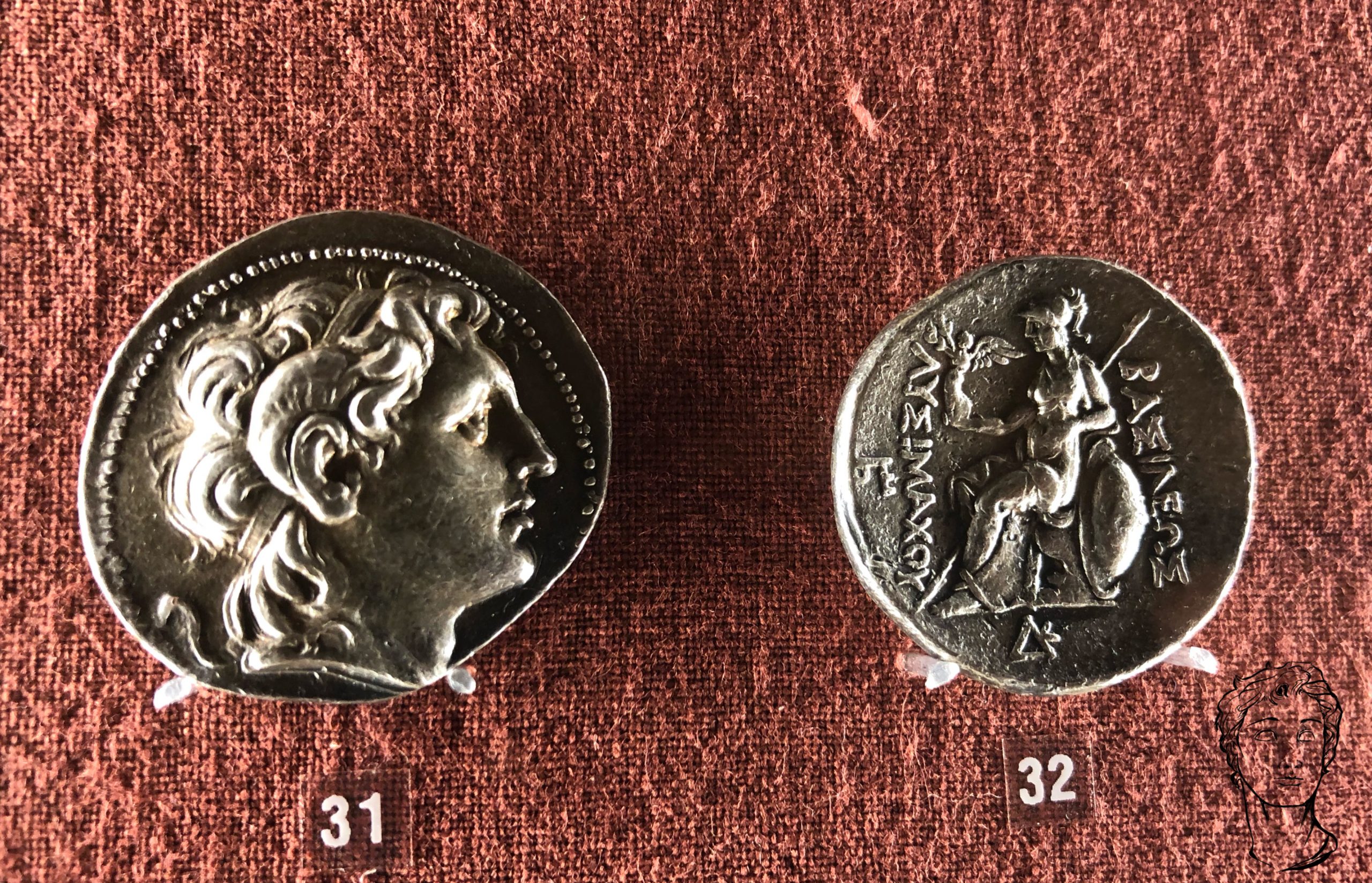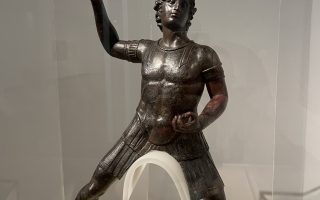This week’s coin of the week is a rather special one as it shows a portrait of Alexander the Great on the obverse. However, he himself did not order the coins to be made. It was in fact one of his successors who had these coins struck: Lysimachos. Read on to discover who he was and why he would do that!
The coin itself
This is a silver tetradrachm minted during king Lysimachos’ reign between 308 and 281 BC. The obverse shows the youthful head of Alexander the Great looking right, surrounded by a dotted line. You can see the horns of Ammon, which refer to Alexander’s claim to be the son of the Egyptian god Ammon. The reverse shows a seated Athena carrying a small Nike in her right hand and while resting her other hand on her shield. The two deities are surrounded by the inscription ΒΑΣΙΛΕΥΣ ΛΥΣΙΜΑΧΟΥ (translation: ‘OF KING LYSIMACHOS’). A small Δ can be found underneath the shield possibly indicating the mint in which the coin was made.
Who was King Lysimachos?
Lysimachos grew up at the Macedonian court in, but is said to have been from a Thessalian family and whose father was a good friend of Philip II. He was one of Alexander’s bodyguards and during their youth is said to have slain a lion after he was locked in a room with it. This event is referenced on some other coins minted by Lysimachos which have his head on one side an a lion on the other.
When Alexander unexpectedly died in 323 BC, his kingdom was left without a proper heir. As a result, his empire was eventually divided among his generals after a series of serious conflicts and battles. Lysimachos was appointed as strategos of Thrace and in 306 BC assumed the title of king. Because he won several decisive battles against the other Diadochi, he also became the king of Asia Minor (in 301 BC) and Macedon (from 288 BC) until his death in 281 BC.
Why did he put alexander on this coin?
He used the image of Alexander for political reasons. By putting the head of Alexander on one side of his coins and his name on the other, Lysimachos created a direct connection between the two and made it clear that he was a legitimate successor of Alexander. Another link between the two can be found via a lion’s paw drawn on the shield of Athena, referring both to Alexander’s Heraklean heritage and Lysimachos’ defeat of the lion. The fact that Alexander appears with his horns of Ammon can also indicate that he was to serve as a divine patron for Lysimachos during his rule.
An interesting fact to end with, Lysimachos was not the first of Alexander’s successors to put his face on a coin. There are examples from Ptolemy I Soter who used Alexander’s image to justify his rule in Egypt in the same manner as Lysimachos was trying to do in Thrace.





